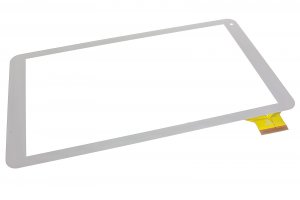
Specifications :
Before you start, make sure the tablet is off.
The screen is attached to the chassis by a strip of adhesive that runs all the way around. To detach it we will apply heat to soften the adhesive and to peel off easily.
In this guide we use a thermal mat, which we will adjust between 80 and 100 ºC. Warm the surface of the screen at this temperature for about 40 seconds.
Holding the glass with the suction cup, insert the prong between the glass and the plastic frame. Scroll the contour, taking off the adhesive.